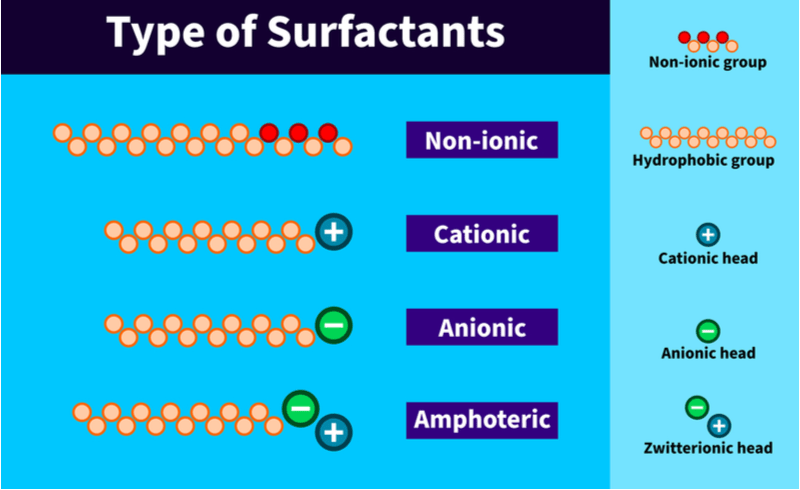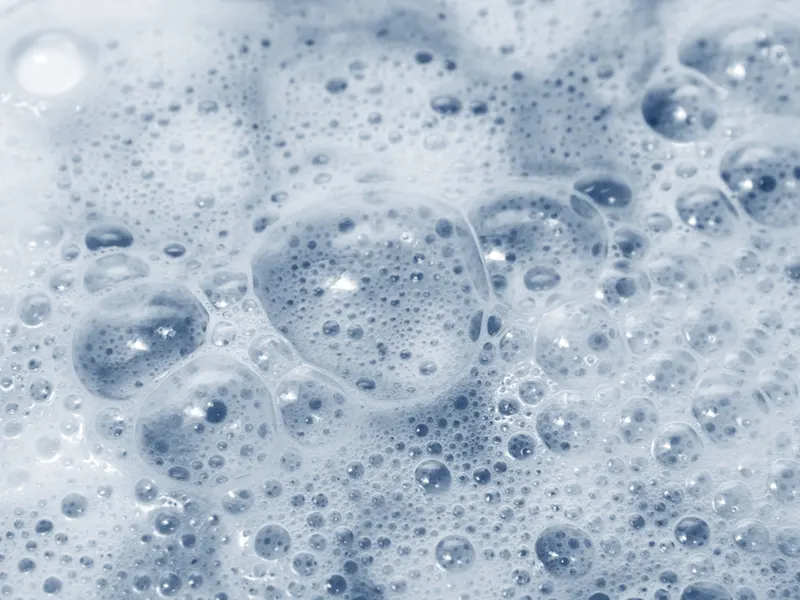Jump to:
You may have heard people talking about surfactants. There is a lot of buzz because some of them are harsh and can damage your hair. However, others are gentle and cleanse and condition your hair.
If you have ever wondered, “What is a surfactant in shampoo,” then you’re in the right place. Read on to learn all about this ingredient, why it matters, and whether or not it’s worth avoiding.
What Is a Surfactant in Shampoo?
Surfactants are molecular compounds in shampoo that serve as cleansing agents. They lather in your hair, and they lift dirt, grime, dead skin cells, product residue, oils, and more from your hair.
When they cause these particles to detach from your hairs, the water from the shower rinses them away. There are many surfactants that are harsh, so it is important to learn about this ingredient. If you want to know more about surfactants, you’re not alone.
Many people ask a lot of questions, including the following:
- What do surfactants do?
- Are there different kinds of surfactants?
- What are the benefits of using shampoo with surfactants?
- Are there any risks?
We wanted to find the answers, so we did the research. Continue reading to learn everything you need to know about surfactants.
What Surfactants Do
The primary function of surfactants in shampoo is to disrupt the surface tension. They break down and remove dirt because they can dissolve the bonds that hold the dirt, oil, and other things to your hair.
This allows the water from the shampoo to wash away these impurities, and it leaves your hair clean. Surfactants also allow the lather that you get when you use shampoo on your hair.
One of the features of these compounds is that they are hydrophilic, or attracted to water, on one end and lipophilic, or attracted to oil on the other. This allows them to absorb water to form a lather and to lift oil from your hair.
There are different types of surfactants, and some are more common than others. When you choose a shampoo, you will need some kind of cleansing agent, but you can choose from different ones.
The Different Kinds of Surfactants in Shampoo

pOrbital.com/Shutterstock
There are four different types of surfactants. They differ from one another in polarity and composition. They all have the same function: to lower surface tension, but they serve different purposes.
They can be used as emulsifiers, foaming agents, dispersants, wetting agents, and more. Some are used in shampoo, but others might be used in cleaning products, fragrances, polishes, and more.
Nonionic Surfactants
This type of surfactant is usually used as a wetting agent, and it is common in polishes, fragrances, cleaners, and some food products. You don’t normally find it in shampoo.
Anionic Surfactants
This type is used as a wetting agent, and it is found in shampoos, as well as body soaps, toothpaste, detergents, and more.
Cationic Surfactants
This type is found in antimicrobial and antifungal products because it can disturb and penetrate the cell membranes of bacteria and viruses.
Amphoteric Surfactants
These surfactants combine the properties of cationic and anionic surfactants, and they are often used in paint and latex. Anionic surfactants are what you will find in shampoos. They provide the lather and cleansing properties.
The most common surfactants are sodium laureth sulfate and sodium lauryl sulfate. While these two sulfates are excellent cleansing agents, they are so effective that they can remove more than dirt and oil from your hair. They can strip your hair of its natural oils, causing your hair to dry out and become damaged.
The sulfates are harsh, and they can irritate the scalp. However, there are gentler surfactants, such as decyl glucoside. If you want to use a gentler surfactant, be sure to familiarize yourself with the ingredients so that you can choose one that is appropriate.
You Might Also Like:
- What Ingredients in Shampoo You Should Avoid?
- How to Make Natural Shampoo
- What Is the Main Ingredient in Shampoo?
- What Is a Paraben in Shampoo?
Benefits of Using a Shampoo With Surfactants
The benefit of using a shampoo with surfactants is that they clean, foam, and lather to lift dirt and other particles from your hair. Cleaning your hair is the purpose of shampoo, and surfactants are what make it possible.
Originally, they used harsh surfactants in most shampoos because they lifted dirt and grime better than other agents. They can remove more than dirt.
They also remove excess oils from sebum, dead skin cells, air pollutants, hair product buildup, and more. Although sulfates and some other surfactants are so strong that they can strip your hair, you need surfactants to clean your hair.
Are There Any Risks?
The risks with harsh surfactants, such as sulfates, is that they can damage your hair and dry it out. They can remove your natural oils, which leaves your hair dry, and it can cause damage. They can also dry out your scalp, leading to irritation and dandruff.
For this reason, companies are starting to use milder surfactants. You can find shampoos that don’t use sulfates, or they may combine different types of surfactants to reduce irritation. They still allow lather, but they aren’t harsh on your scalp and hair.
Frequently Asked Questions

Taffpixture/Shutterstock
Do all shampoos contain surfactants?
Yes, all shampoos contain surfactants. They are the cleaning agents in shampoo, and they remove the dirt, oils, and other contaminants from your hair.
Do sulfate-free shampoos have surfactants?
Yes, they have mild surfactants in place of sulfates. One example is decyl glucoside, which still lathers and cleans your hair without drying it out or damaging it.
How do surfactants work?
Surfactants work by stirring up the surface, in this case your hair, and trapping dirt and removing it from the hairs. They also remove oils, hair product buildup, air pollutants, and other debris from your hair.
So, What Is a Surfactant in Shampoo?
A surfactant in shampoo is the cleansing agent that allows shampoo to clean your hair. It works by disrupting the bonds that hold dirt and oils to your hair so that they are lifted and rinsed away by the water from the shower.
Some are harsh, such as sulfates, but there are mild surfactants too. When you choose a shampoo, the surfactants will be listed as ingredients, so you can choose one that is mild.
